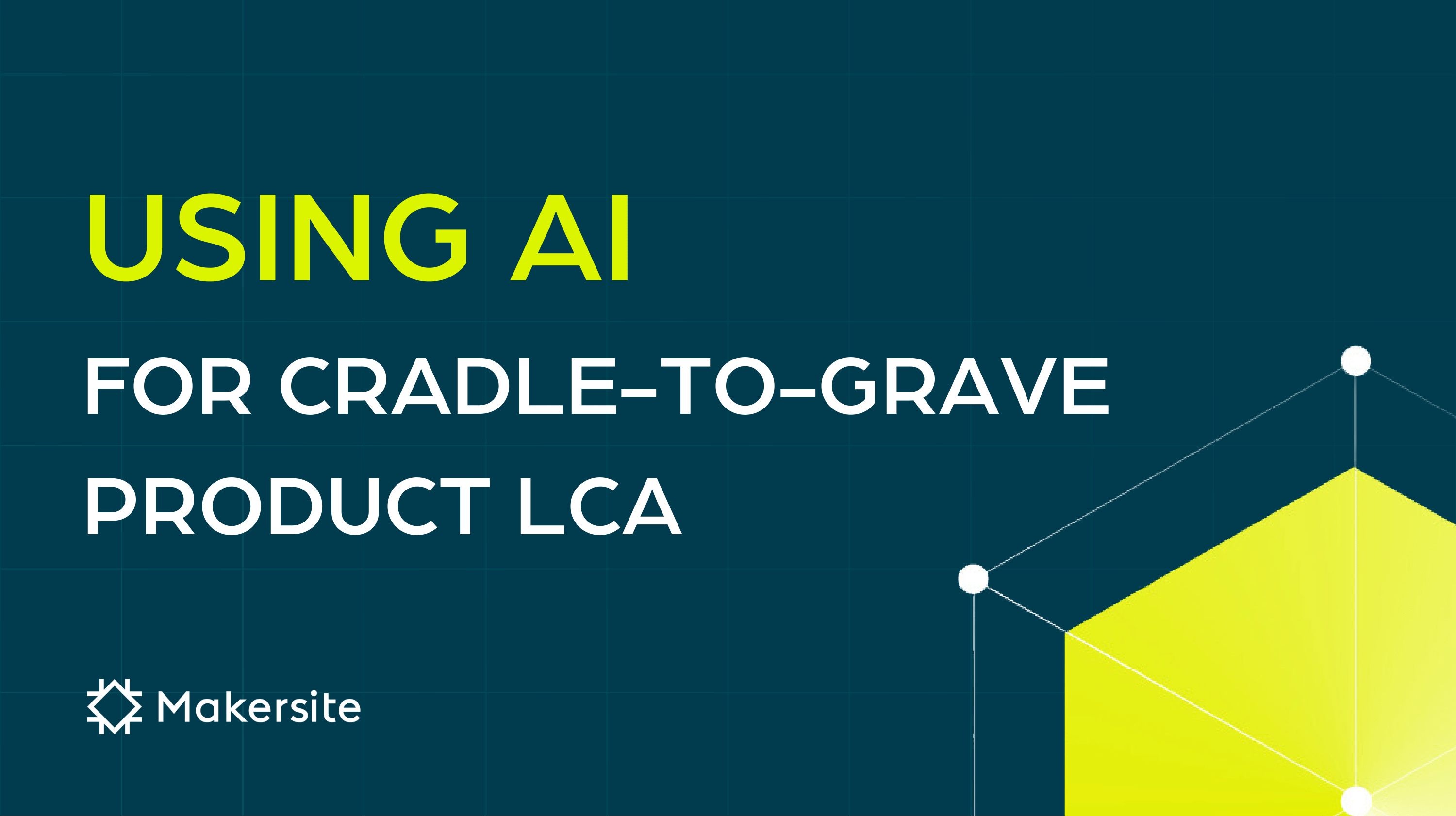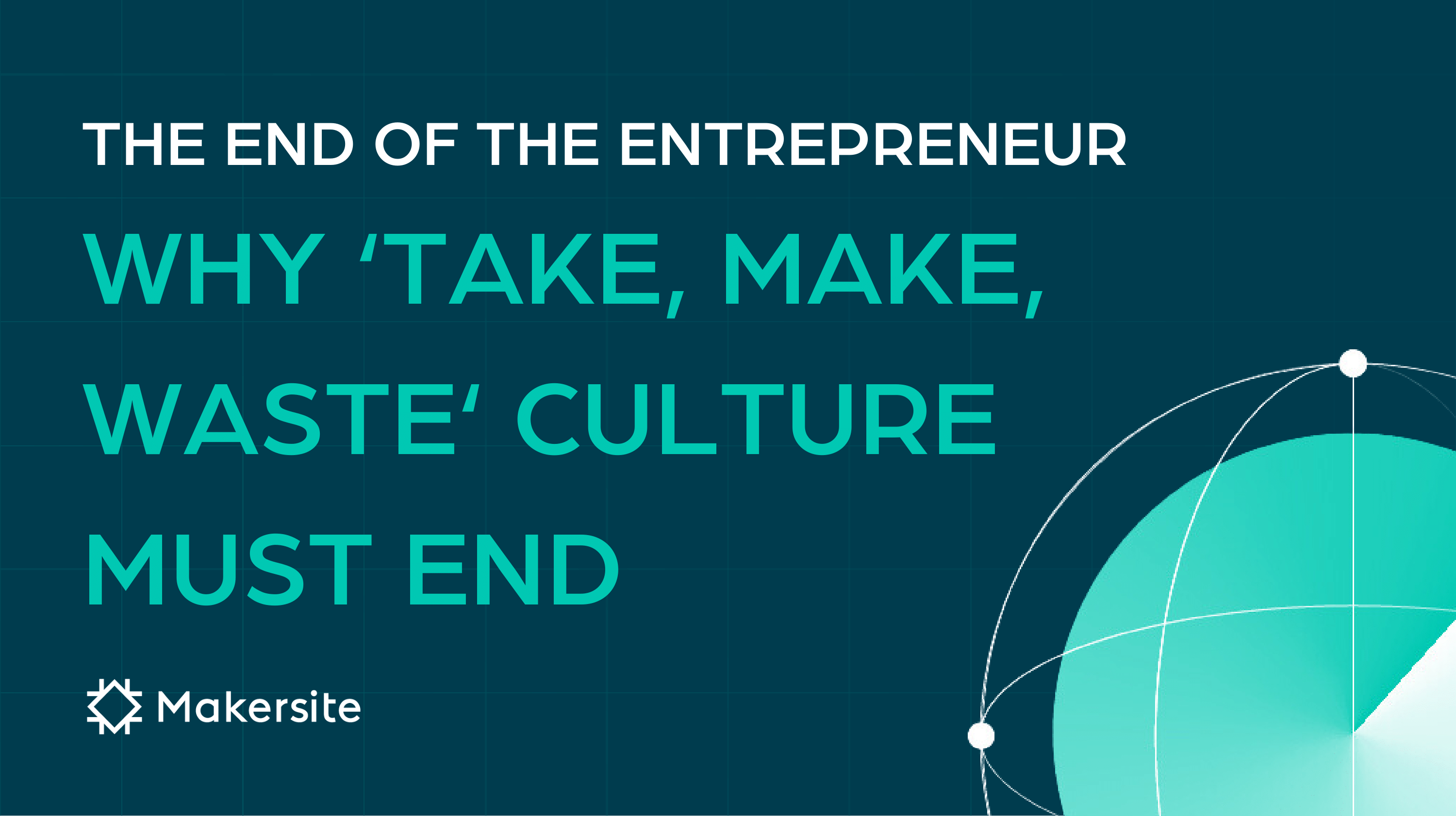In an age where sustainability is no longer optional but crucial for business longevity and global well-being, product lifecycle analysis (LCA) stands as an invaluable tool for measuring and reducing the environmental impact of products. However, the complexities involved in traditional LCAs, as well as the dependence on specific expertise, often lead to time and resource-intensive processes, which can be barriers to widespread adoption, particularly for smaller businesses.
Enter artificial intelligence (AI), with its capabilities to automate, analyze, and scale. The integration of AI into LCA processes offers a new horizon for manufacturers and sustainable innovators to conduct more thorough and frequent analyses, leading to more informed decision-making and, ultimately, greener products. This blog explores the role of AI in revolutionizing product LCAs, the benefits it offers, and the challenges it confronts, as well as real-world examples of AI-driven LCA in action.
For a comprehensive look at navigating AI’s potential and pitfalls with LCA, and ensuring trustworthy results, we delve deeper into these topics in our latest whitepaper – The AI tightrope: Balancing automation, accuracy and trust in LCA/EPD
Understanding product lifecycle analysis
Product Lifecycle Analysis (LCA) can be categorized mainly into two types: “cradle-to-gate” and “cradle-to-grave.”
Cradle-to-gate LCA focuses on assessing the environmental impact of a product from the extraction of raw materials (the cradle) up to the point where the product leaves the factory gate, ready for distribution. It doesn’t consider the use and disposal phases of the product’s life cycle.
In contrast, cradle-to-grave LCA encompasses a more comprehensive assessment, extending from raw material extraction through to the product’s end-of-life disposal, including its use, recycling, and landfill stages.
The principal advantage of cradle-to-grave LCA lies in its holistic approach. By considering the entire lifespan of a product, this method provides a more accurate picture of its environmental impact.
This thorough analysis enables manufacturers and businesses to identify potential areas for reducing environmental damage not just in production, but in product use and disposal as well, leading to more sustainable products and practices. Consequently, cradle-to-grave LCA is often regarded as superior for those aiming to make genuinely eco-friendly decisions.
Challenges in conducting cradle-to-grave LCA
Undertaking a cradle-to-grave life cycle assessment poses distinctive challenges for sustainability professionals. One major obstacle lies in the difficulty of acquiring precise and comprehensive data concerning the environmental impact of raw material extraction and processing. This data is crucial for conducting a thorough LCA but can prove elusive due to proprietary processes or the dispersed nature of supply chains.
Another hurdle is the intricate nature of contemporary supply chains themselves. Products often traverse multiple countries and manufacturing stages before reaching the final disposal stage, complicating the tracking of their precise environmental impact. Moreover, standardizing this data for comparison purposes can be laborious, given the diverse production techniques and materials utilized across various industries.
These challenges demand advanced expertise, significant resources, and frequently, innovative data collection and analysis methods, underscoring the intricacy and significance of conducting precise cradle-to-grave LCAs.
Overcoming challenges in LCA with AI
AI plays a pivotal role in revolutionizing cradle-to-grave life cycle assessment (LCA) by offering unparalleled advantages in data collection, processing, and mapping across diverse systems. Firstly, AI streamlines the collection process by automatically gathering data from a myriad of sources, such as online databases and enterprise systems. This automation not only saves time and resources but also guarantees the inclusion of up-to-date data in the analysis.
Secondly, AI’s capability to handle vast datasets enables sophisticated mapping and processing, significantly bolstering LCA efforts by intelligently inferring and filling gaps in datasets, thereby providing a more complete and accurate picture of a product’s environmental impact.
Manufacturers can proactively identify and address potential environmental risks through AI-driven simulations of various scenarios like material changes or production process adjustments, thus bolstering sustainability efforts.
Moreover, AI facilitates real-time monitoring and optimization by providing continuous feedback loops. For instance, product data models built with AI can help engineers quickly identify alternative material or supplier choices, based on multiple criteria such as cost or environmental impact. This real-time insight empowers organizations to make informed decisions promptly, ensuring efficient resource utilization and environmental lifecycle thinking.
Benefits for manufacturers and sustainable innovators
AI brings a multitude of benefits to those invested in sustainable practices, ranging from efficiency and innovation to market competitiveness.
Improved decision-making processes
By enhancing the speed and accuracy of LCA, AI empowers decision-makers to develop and implement sustainability strategies more proactively. With AI insights, product teams can prioritize areas for improvement and make smarter choices that align with business and environmental goals.
Enhanced product innovation and market competitiveness
AI’s contributions to LCA enable businesses to innovate sustainably. Through a deeper understanding of their products’ lifecycles, companies can develop eco-friendly products that resonate with consumers’ growing environmental consciousness, thereby gaining a competitive edge in the market.
Challenges and considerations
While the prospects of AI in LCA are promising, there are challenges that need to be addressed.
Data accuracy and reliability
The effectiveness of AI-driven LCAs depends on the quality of the input data. Ensuring the accuracy and reliability of data sources, especially those feeding predictive models, is critical to generate meaningful and actionable insights.
Integration with existing systems and workflows
Adopting AI solutions for LCA needs careful integration with existing systems and workflows. For successful implementation of AI in LCA, it’s important to integrate product data from Product Lifecycle Management (PLM) systems and map this information to transaction data held in Enterprise Resource Planning (ERP) or purchasing systems, ensuring a seamless flow of information and heightened efficiency in sustainability analysis.
Examples of AI-enabled LCA
Several industries have begun to leverage AI for LCA:
- Amazon and Flamingo: With the assistance of Flamingo, an AI-powered algorithm, Amazon is now able to swiftly and precisely measure the carbon footprint of its products. In a specific trial, the algorithm decreased the time required by scientists to map 15,000 Amazon products from a month to just a few hours.
- Microsoft’s LCA 2.0 powered Makersite: Microsoft is committed to reducing the environmental impacts of its products through structured Ecodesign approaches and LCA. Microsoft’s innovative approach involves leveraging AI and data analysis provided by Makersite to automate and scale the product modeling process, focusing on supply chain-specific environmental impact accounting. The transition to Version 2.0 has improved quality, increased accuracy, and better identification of environmental hotspots in their supply chain. The methodology shift aims to enhance transparency, collaboration, and consistency in LCA results, and product emissions, across Microsoft’s entire product portfolio
These examples demonstrate the potential of AI to transform LCA into a more agile and strategic product carbon footprint environmental management tool.
Conclusion
AI will be a game-changer in many industries. Its role in accelerating and enhancing product design processes makes it a powerful solution for managing complex products and their supply chain. With its ability to clean, connect and enrich cross-departmental data with third-party sources, it removes the dependency on sustainability, cost and risk experts.
With AI, product engineers and designers are able automatically detect and connect product components and manufacturing processes to the right supply chain data from a harmonized and hyper-connected database, instantly solving one of the most time-consuming problems: mapping data to multiple sources at a granular level. The result is a detailed, extremely specific view into deep-tier supply chains, giving users a better understanding of environmental footprints, should-costing, and compliance risks at an unprecedented speed.
As manufacturers and innovators realize the benefits of AI-driven LCAs—better decision-making, deep-tier supply chain visibility, reduced environmental impact, and enhanced competitiveness, to name a few—it’s not a question of whether AI should be integrated, but instead of how quickly and effectively it can be done.

